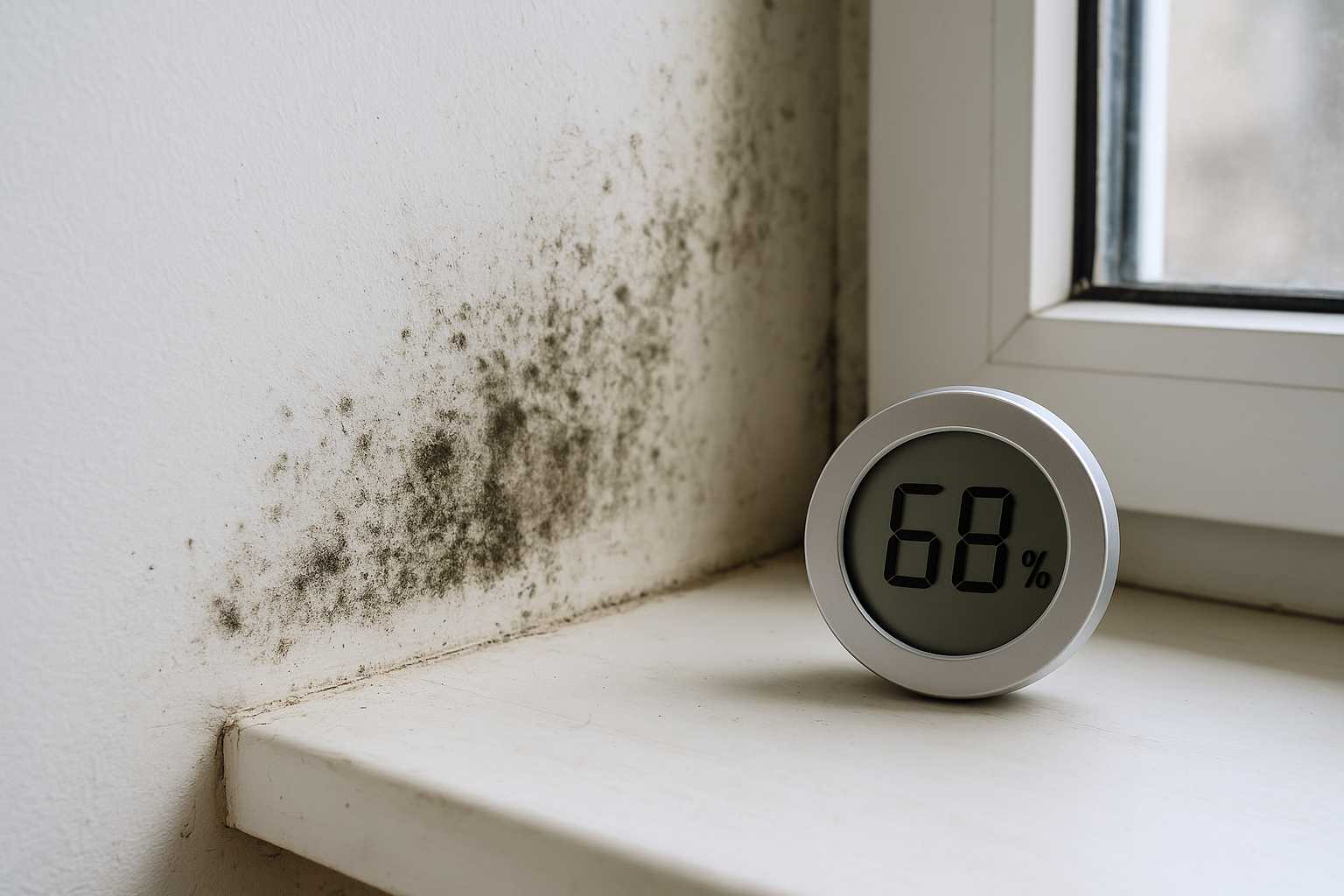Mold is one of the most frustrating problems homeowners face. You scrub it away, apply cleaning solutions, and even repaint affected areas—only for the mold to return weeks later. Why does this happen? The simple answer: cleaning mold without addressing the underlying moisture problem is a temporary fix.
If you want to know how to prevent mold from coming back, you must go beyond surface cleaning and target the real culprit—moisture. In this guide, we’ll cover effective strategies like leak repair, ventilation improvements, humidity control, proper drainage, and insulation upgrades to stop mold for good.
Why Mold Keeps Coming Back After Cleaning
If you’ve ever wondered, “Why does mold keep coming back after cleaning?”, it’s because mold thrives in damp environments. Cleaning removes visible spores, but hidden moisture sources remain, fueling regrowth. Common causes include:
-
Water leaks from pipes, roofs, or windows
-
Poor ventilation in bathrooms, kitchens, or attics
-
High humidity levels indoors
-
Condensation on walls and windows
-
Inadequate drainage around the foundation
Key takeaway: To stop recurring mold, fix the root cause—excess moisture.
Want to learn about early warning signs? Read Signs of Mold in Your Home.
Step 1: Repair Leaks to Stop Mold at the Source
How Water Leaks Fuel Mold Growth
Even minor leaks can create a perfect environment for mold. Water seeps into walls, floors, and insulation, where it’s hard to detect—and mold spores spread quickly.
Leak Repair Tips to Avoid Mold
-
Inspect under sinks, behind appliances, and in basements regularly.
-
Check roof shingles and flashing after heavy rain.
-
Seal gaps around windows and doors to prevent water intrusion.
Does Fixing Leaks Stop Mold From Returning?
Absolutely! Fixing leaks eliminates the constant moisture supply that mold needs to survive. Pair this with proper drying and cleanup, and you significantly reduce the risk of regrowth.
Step 2: Improve Ventilation for Long-Term Mold Prevention
Stagnant air traps moisture indoors, especially in bathrooms, kitchens, and attics. Improving airflow is essential to stop mold from growing back after cleaning.
Best Ventilation for Preventing Mold
-
Install exhaust fans in bathrooms and kitchens.
-
Use a whole-house ventilation system for consistent airflow.
-
Keep interior doors open to allow circulation.
Pro Tip: Proper attic ventilation prevents warm, moist air from condensing under the roof, which is a common cause of mold growth in winter.
Step 3: Control Humidity Levels Indoors
Moisture control is key. Mold thrives when indoor humidity exceeds 60%.
Ideal Humidity Levels to Prevent Mold
-
Keep indoor humidity between 30%–50% year-round.
Best Dehumidifier Settings to Prevent Mold
-
Set your dehumidifier to maintain 40%–50% humidity for optimal mold prevention.
DIY Solutions to Stop Mold Regrowth
-
Use silica gel packs or moisture absorbers in closets.
-
Open windows on dry days to improve air exchange.
Step 4: Ensure Proper Drainage and Waterproofing
Water pooling around your foundation or seeping into the basement creates a prime environment for mold.
How to Improve Home Drainage to Prevent Mold
-
Keep gutters clean and downspouts extended at least 6 feet from the foundation.
-
Grade your yard so water flows away from your home.
How Basement Waterproofing Prevents Mold
Waterproof coatings, sump pumps, and French drains keep basements dry and mold-free.
Step 5: Upgrade Insulation and Use Mold-Resistant Materials
Insulation prevents condensation inside walls and ceilings—a major contributor to mold.
Mold Prevention Through Proper Insulation
-
Use closed-cell spray foam or rigid foam board for moisture resistance.
-
In crawl spaces, add a vapor barrier over the soil to block moisture.
Mold-Resistant Building Materials
-
Opt for mold-resistant drywall and paints in high-humidity areas like bathrooms.
Home Maintenance Checklist to Prevent Mold
Here’s a quick checklist you can use:
✔ Check for leaks under sinks, behind appliances, and in the attic.
✔ Inspect roof and gutters after storms.
✔ Test indoor humidity levels regularly.
✔ Run exhaust fans during and after showers.
✔ Clean and maintain HVAC filters.
✔ Ensure drainage directs water away from the foundation.
✔ Schedule seasonal mold inspections.
Want more? Check out 5 Hidden Hazards in Your Home (Mold Removal and More).
When to Call a Professional
If mold keeps returning or covers a large area, DIY solutions may not be enough. Professional mold remediation ensures proper removal and prevents health risks.
BC Green Demolition Can Help
Conclusion: Fix Moisture to Stop Mold for Good
If you want to know how to prevent mold from coming back, remember this: Cleaning alone doesn’t work. You must repair leaks, improve ventilation, control humidity, ensure proper drainage, and upgrade insulation.
Stop mold at its source—moisture—and your home will stay safe, dry, and healthy.
Need expert help? Contact BC Green Demolition for Mold Removal in Vancouver today for a free consultation.


